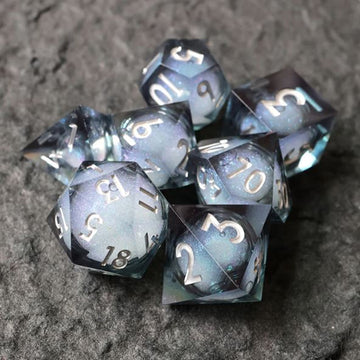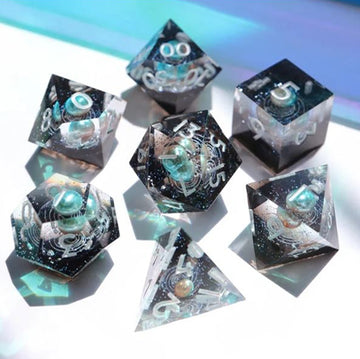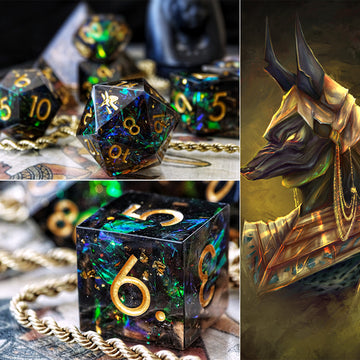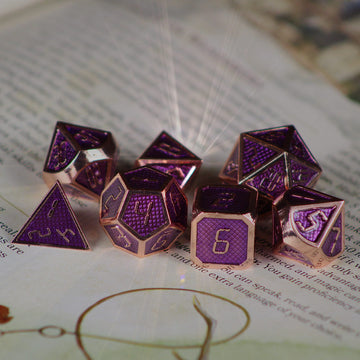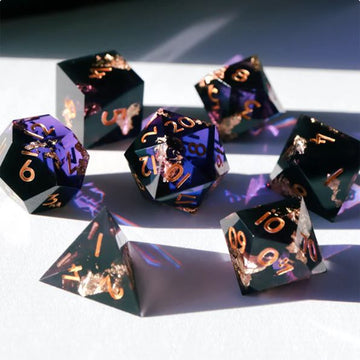The Role of Banquets in Medieval and Renaissance Europe
by Riley Rath
Title Image © Natcha Ngamtweerat
Recently, during one of my home DnD campaigns, my party journeyed to a cluster of islands populated by Tritons...
In this particular world, Tritons are directly inspired by Tahitians, Maori, Hawaiian, and other Polynesian peoples. After the party had defeated some "te ka" (lava monsters), the Tritons celebrated their victory with a traditional luau on the beach.
Now I cooooould use this particular story to talk about how most DnD players don't care if the encounter is irrelevant to the plot so long as it allows them to interact with the world and make interesting decisions. But insteeeeeeead I'm going to talk about the Polynesian feast itself, or more specifically...
How do you run a DnD banquet? Or DnD festival encounter? Or let players participate in a local DnD feast?
I had to make up the luau on the fly, which I try to limit as much as possible as a DM, especially when dealing with specific cultural traditions. In general, though, I am comfortable filling in the details, but when it comes to the STRUCTURE of an encounter, I like to have that thought out, figured out, and planned out.
And since I could not find anything online about running a DnD banquet, it appears that the task of creation has fallen to me! So I did a little research on medieval and renaissance feasts, brainstormed its integration into DnD, and wrote a blog post for the wider DnD community.
Aaaaaaand then it ballooned into 7,000+ words... so for now we are going to divide it into four different blog posts. Once the other blogs are up, you can read part 2 here (medieval festivals), part 3 here (food and activities), and part 4 here (NPCs and resources for making your own)!

© Kezie Demessance
Why Banquets, Feasts, and Festivals Are Fun in a DnD Adventure
This is one of those sections where I cannot believe that I need to spell it out, but I know people are different than me, so here I go...
Have you ever been to:
- A really cool fair or concert?
- Or a wedding where you knew both the bride and the groom really well, so all your friends were there?
- Or a really big Thanksgiving dinner with family you really like?
- (And since I'm sure a disproportionate number of my readers have done this) Have you dressed up and gone to the Renaissance Festival when it was in town?
Weren't those... ya know... fun?
That's what a DnD feast would be: FUN!!!
Banquets are simply fun, even when you pretend to go to them in a game. Where else can you find tasty food, exciting drama, and crazy party moments all in one place? Picture your rogue sneaking around and overhearing a plan to poison the king, or your bard singing to win over a new friend, or your sorcerer being recruited by the king's page to enroll in the local wizard university.
Now, as I shall explain shortly, not all banquets were absolute bangers of parties. Many of them were closer to the formal dinners of Downton Abbey. But feast days and festivals certainly were a blast, and even when it comes to banquets the dinner decorum was just a small part of the night. And of course, as a DM, you can make up your own version of medieval manners (DnD banquet blog post #3).
"But what about combat?"
Granted, unless your DnD feast is taking place amid the barbarian tribes of the north, or a local blue dragon believes the DnD festival is a perfect time to establish their power across the dominion, it is unlikely that a combat encounter is going to break out in the middle of the festivities. So for the combat-heavy, war-mongering, blood-lusting players out there, a DnD banquet might be classified as "boring."
However, for the majority of players who prefer their sessions and adventures to have a healthy, balanced breakfast... to have all three pillars of the game (combat, exploration, and roleplaying).... a DnD banquet or feast provides at least four things they need in their adventure:
1) Role-playing with diverse and interesting NPCs
2) Downtime from the life-threatening adventures
3) An infinitely more interesting long rest
4) Low-stakes exploration of the DM's world
DnD banquet and feast encounters help with the PACING of your game.
And in my not-so-humble opinion, good pacing is NEEDED for a well-rounded adventure to remain exciting from beginning to end. If everything is "high-octane/mach-five" in your campaign, your players will get bored and fatigued. Too much for too long and confronting Tiamat across the wastes of Avernus while riding pegasi and wielding the Sword of Kas will fail to drop any jaws.
A a general rule, in order to create an immersive adventure, the environment needs to be a fleshed-out world rather than a mere setting. On top of that, in order to create relatable, beloved characters, you need moments where they pause from being a hero and simply become a person.

© BB.Kim
What Was a Medieval Banquet Like?
So first of all, I know many high schools still teach the "dark ages were horrible and everything modern is better" garbage, so let me dispel one of the medieval feasts myths right now: there were not disgusting affairs with people snarfing down meats and throwing their bones on the floor as they got riotously drunk. (Though that was probably a more common occurrence in many medieval taverns...)
Many of the guests were wealthy merchants attempting to enter high society, pious clergy who were seen as the humble servants of all, and noble knights attempting to live up to the code of chivalry... and just about all behaved accordingly. Cleanliness, good manners, deferential respect, and moderation were valued at these events. Usually it was not a riotous gorging, but a friendly breaking of bread.
Almost all banquets would take place in the great hall of the lord. Tables and benches would be set up for the occasion and then removed at its conclusion. The host and honored guests would sit in the front, elevated above the other tables. The rest of the seating would have been arranged by the guests position in society; the closer a guest sat to the host, the higher their rank. Only those of the highest rank would have chairs with backrests; everyone else sat on benches along long tables.
There was a lot of social etiquette at a banquet. This included seating plans, fine linen tablecloths, and special dishes created to wow top guests. Nearly all brought their own knives, though the host did provide spoons. While those of higher standing were served first, no one ate until all had been served. They ate with one hand and kept the other meticulously clean out of respect for the other people who shared their trencher bread plates.
There would be numerous courses of poultry, pig, fish, pastries and more. The seemingly endless quantity was noticeable, but so was the quality: the food was fabulously prepared, making each dish a spectacle in its own right. The more elaborate dishes would be served to the host and those at the high table for all to see. And any food that was not eaten that night would have been saved in bowls and distributed to the poor.
Why all this order, pomp, and circumstance?
Banquets in medieval and Renaissance Europe were more than just meals.
1. They were important signs of wealth, culture, and power. It was the easiest, most obvious way to display your wealth and bounty to friends and foes alike.
2. They were also an important and necessary gesture of hospitality, particularly in the more northern kingdoms of Europe.
3. Banquets were great for making connections and forging alliances. Guests take this time to strike deals, share gossip, or show off their alliances. That said, they were expensive, and most nobles didn't have tons of cash on hand, so they weren't just held willy nilly. They were usually held for special events such as a wedding, military victory, diplomatic mission, or holiday. But whatever the official reason for the occasion, the grand halls, fancy food, and lofty manners were designed to make the host look as good as possible so that advantageous alliances and partnerships could be formed.
Next blog post: Festivals vs Banquets... What Made These Feasts Different?

Want some food dice for your fantasy feast? Check out our Cheddar Cheese dice.
Riley Rath

Riley is a freelance tabletop games copywriter, content writer, and marketer based out of Spokane, WA. When not playing or writing about board games or DnD, he is busy with family, hiking, cooking, and gardening... very hobbit-like for a 6'4'' dude.



